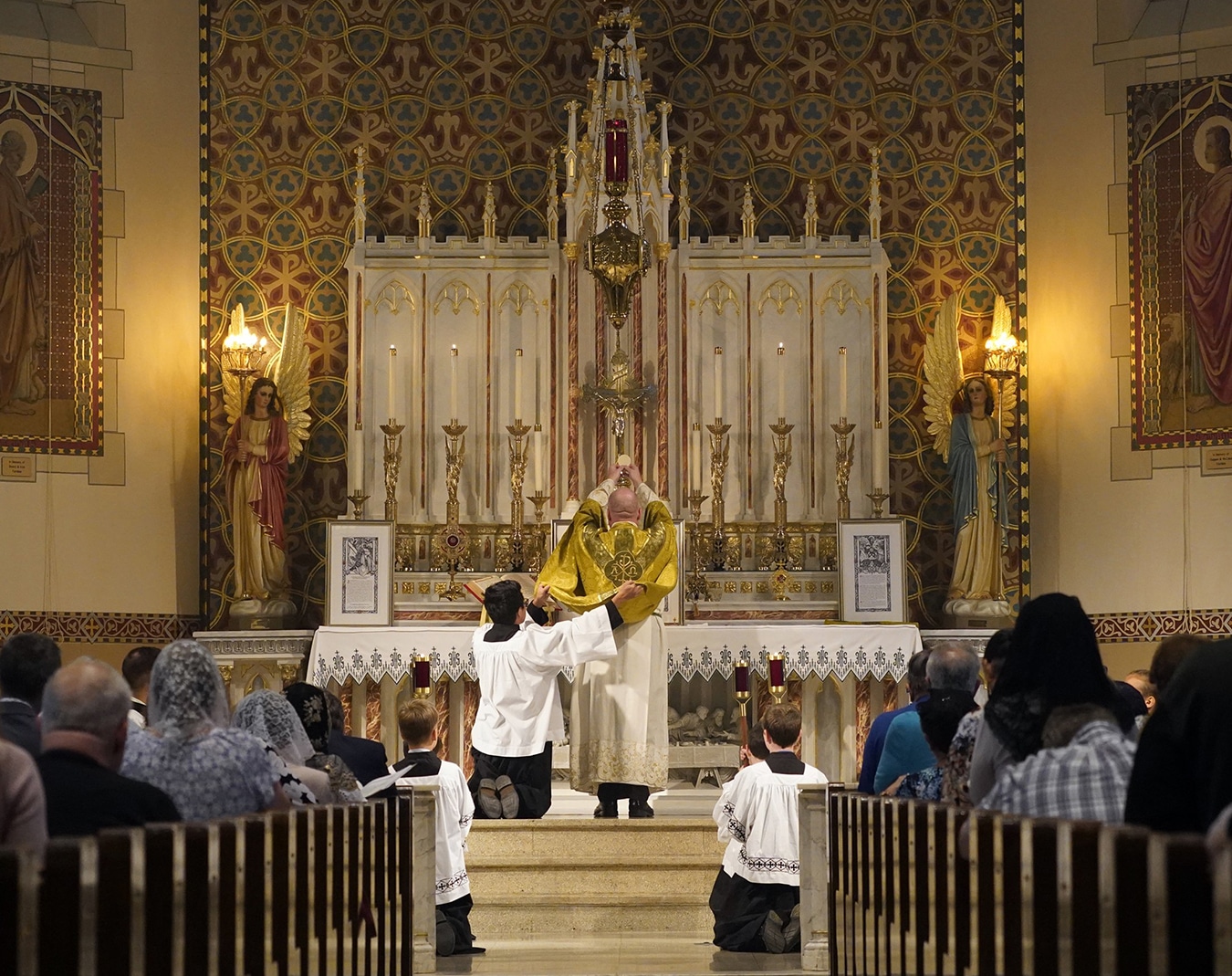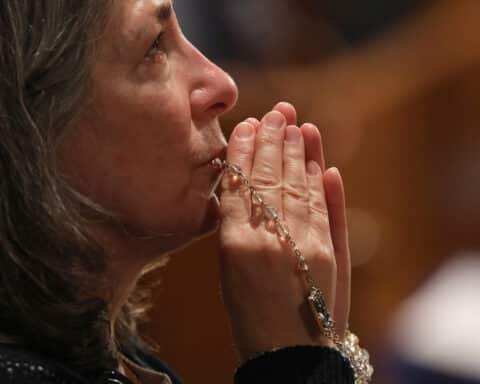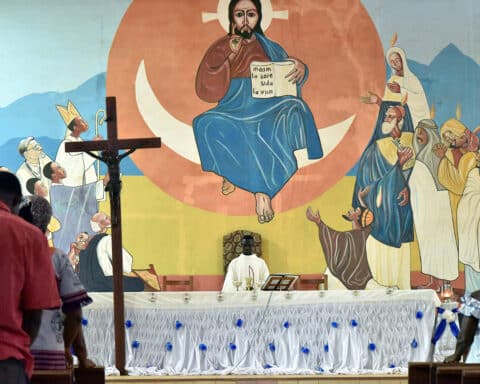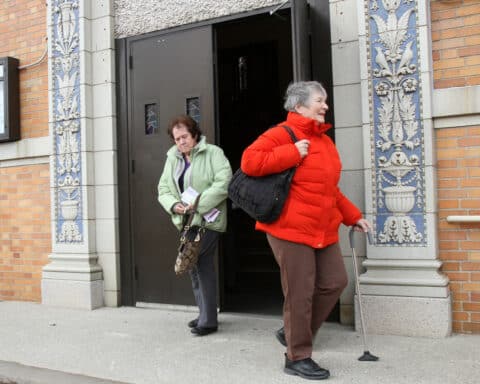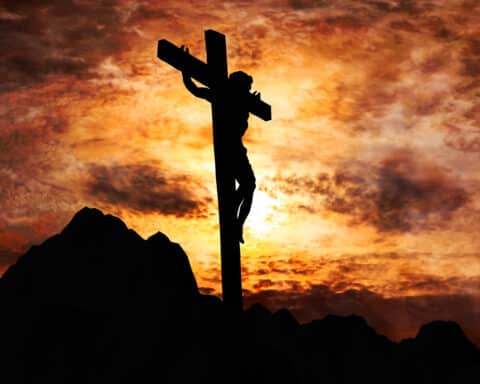Oscar I. Delgado was first exposed to the “traditional Latin Mass” when he and his wife were at the University of Chicago.
“I just got hooked,” said Delgado, a former NBC bureau chief and now a film producer. “It was really beautiful. It’s just quiet; it lends itself to a very deep reverence. There was a seriousness that I found and an authenticity that attracted me.”
Now living in Minnesota, Delgado still attends a traditional Latin Mass, also known as the Tridentine Mass. It’s about a 20-minute drive on Sundays.
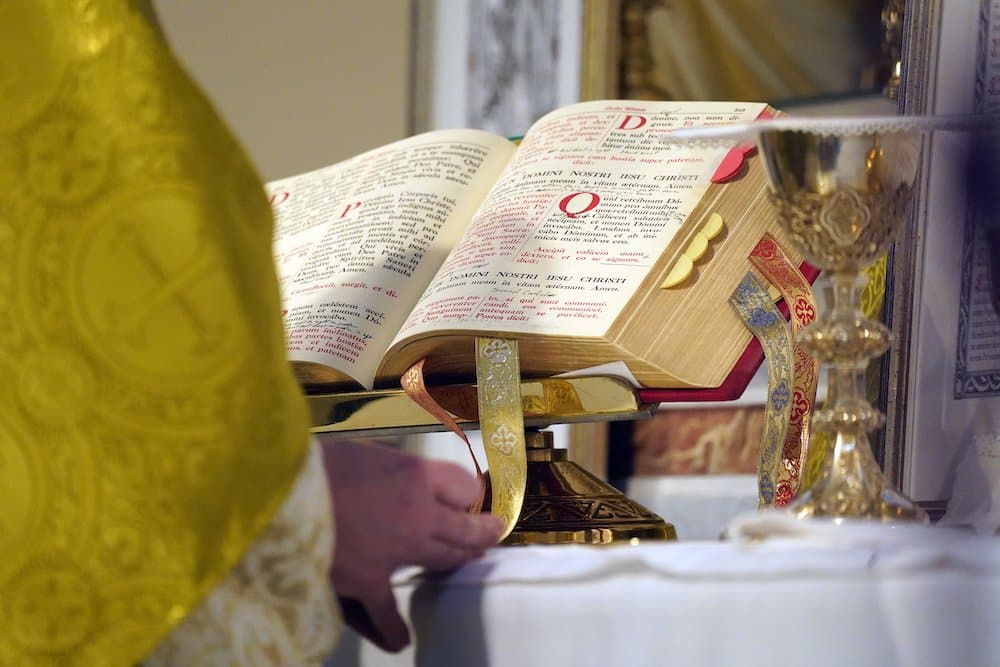
Compared to other American devotees of this form of the liturgy, he’s fortunate. In some parts of the country, attendees have lost the parish where they had been going, thanks to two-year-old Vatican regulations governing the traditional Mass. Some people now have to drive significantly farther.
But the regulations are being implemented in stricter or looser ways in the U.S., depending on the local bishop. Some bishops, whether because they themselves appreciate the traditional Mass or they recognize its importance for some Catholics, apparently are allowing the situation to continue pretty much as it was. Others, decidedly not so.
Canceling Benedict’s permission
Pope Francis on July 16, 2021, issued the apostolic letter Traditionis Custodes (“Guardians of the tradition”), in which he declared that the Novus Ordo Missae — the reformed Mass promulgated by Pope St. Paul VI after the Second Vatican Council — is the “unique expression of the lex orandi [the law of prayer] of the Roman Rite.” He rescinded the broad permissions Pope Benedict XVI granted for celebration of the Tridentine Mass in his 2007 letter Summorum Pontificum. Benedict’s term for the ritual — the Extraordinary Form of the Roman Rite, distinguishing it from the novus ordo, the ordinary form — now is obsolete.
In a letter accompanying his decree, Francis explained that a worldwide survey of bishops revealed that many devotees of the old Mass were exploiting the liberty Pope Benedict granted and causing division in the Church. He said that those attached to the older Mass — also called the Usus Antiquior — will “need to return in due time” to the novus ordo.
In December 2021, Cardinal Arthur Roche, Prefect of the Dicastery for Divine Worship and the Discipline of the Sacraments, issued further restrictions.
Then, this February, Francis clarified that bishops must obtain authorization from the Holy See before granting permission for parish churches to be used for the traditional Latin Mass and before allowing priests ordained after the publication of Traditionis Custodes to obtain faculties to celebrate it.
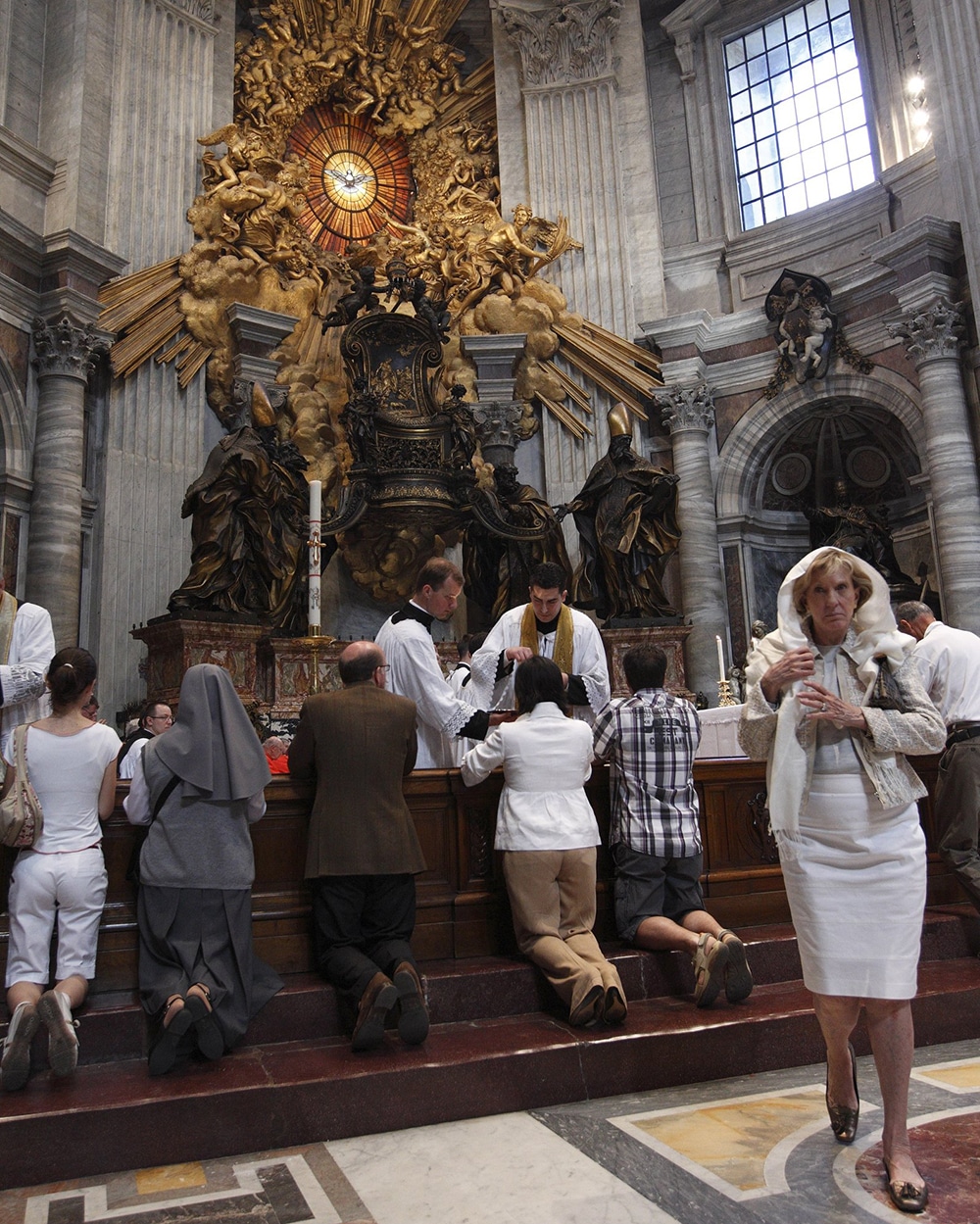
‘Handwriting on the wall’
Latin Mass communities are still struggling with Traditionis, with reactions ranging from resignation to fear of what might be taken away next.
“They see the handwriting on the wall,” said a retired New York priest. Some of those interviewed for this article, such as this priest, asked that they not be named, or identified only by first name.
“One of the consequences of Traditionis Custodes is that it has disappointed so many people. It has caused painful reactions: people who are devoted to the Extraordinary Form feel like they’re being forced into the catacombs,” said the priest.
Some of the clandestine atmosphere comes from the regulations themselves. Based on Rome’s decrees, Latin Mass communities are not allowed to list the times of their services on a parish bulletin or website, or live stream services.
As is often the case in clandestine practices, creative responses develop. One priest lists the Tridentine Mass in his bulletin as the “Youth Mass.” Those in the know recognize that that’s the time for the traditional Latin Mass, because so many young people and young families attend it.
‘Benign neglect’
On the other hand, in some dioceses, there is, as one priest put it, “benign neglect” on the part of the local bishop, allowing the status quo to pretty much continue.
But there is also uncertainty, knowing that Rome could always reprimand sympathetic bishops.
“The majority of American bishops do not want to make life difficult and unpleasant for the faithful who love the traditional liturgy,” said Gregory DiPippo, editor of the New Liturgical Movement website.
In the Diocese of Lafayette, Louisiana, for example, Bishop J. Douglas Deshotel wants to “maintain what we do, and as long as things are thriving in a sense, he’s going to maintain it as it is,” said Father Jason Vidrine. “He has no intention to change it unless mandated to do so.”
“Christ said, ‘By their fruits you will know them.’ Well, if you look at any measure and just be objective, where is the Church growing? Is it growing in those orders that have taken off the habit, or is the growth in the communities that are more traditional and moving toward a more Christ-centered focus and charisms?”
— Oscar I. Delgado
Father Vidrine, who celebrates the traditional Mass on Sundays at St. Martin de Tours in St. Martinville, said people are appreciative of “our bishop’s concern for them.”
The Mass at St. Martin’s is attended by approximately 300 people each Sunday — 60% of whom are “young families with lots of kids,” Father Vidrine said. “They’re very open to life.” A second Tridentine Mass in the diocese is offered at a church in Plaisance, with about 200 regularly in attendance.
And in the Diocese of Savannah, Georgia, although the traditional Mass was moved out of the Cathedral of St. John the Baptist, causing some consternation because it had been there for so long (and where, before Vatican II, one regular was Flannery O’Connor), “everybody seems to be happy, at the end of the day, with the change,” said Father Pablo Migone, chancellor of the diocese.
The new location is about a mile away, at Sacred Heart, a “beautiful church, an older parish with a pastor who really has a heart for the Latin Mass and for that community,” Father Migone said. “When the Mass was at the cathedral, they had a kind of a rotation of priests — none of them cathedral priests — that were celebrating the Mass. But now they have a steady pastor, who is the pastor for the community. They have potlucks after Mass. They’re much more engaged in parish life than they were at the cathedral.”
As in other Tridentine Mass churches, the Mass “continues to attract largely a younger population — younger families, young adults, young families with many children,” Father Migone added. “There is still a desire from among the faithful for more: to have the Mass on holy days of obligation, to be able to have a celebration of some sacraments like marriage and baptism, but all of that has been restricted.”
The weekly Mass at Sacred Heart is complemented by monthly Masses in three other churches of the Savannah Diocese.
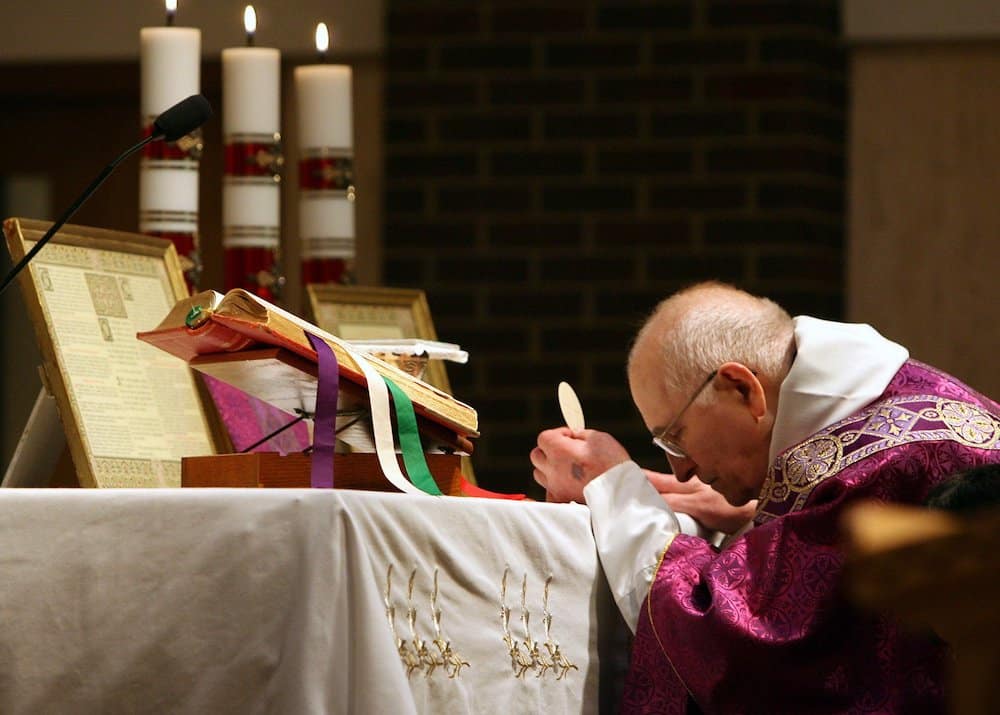
Capital clampdown
Quite the opposite situation prevails in the Archdiocese of Washington, D.C., and neighboring Diocese of Arlington, Virginia, where about 30 churches previously offered the traditional Latin Mass on a weekly — and in some cases, daily — basis.
“There were growing vibrant congregations full of young families all over the Diocese of Arlington and Washington D.C., people who were very committed to raising their children in the Catholic faith and really structured their lives [around the traditional Mass], lived around locations that are accessible to the TLM,” said Noah B. Peters, president of the Arlington Latin Mass Society. “And then all of a sudden, by [the diocesan implementations of Traditionis], which came down in the summer of 2022, everyone had the rug pulled out from under them.”
The 21 Latin Mass sites in the Diocese of Arlington were reduced to eight, Peters said, and of those, five were not in parish churches anymore.
“They were in gyms, social, parish halls,” he said, adding that it felt “almost like a form of being segregated from the rest of the parish,” to prevent mixing between the Latin Mass and novus ordo communities.
Peters fears that the number will be further reduced.
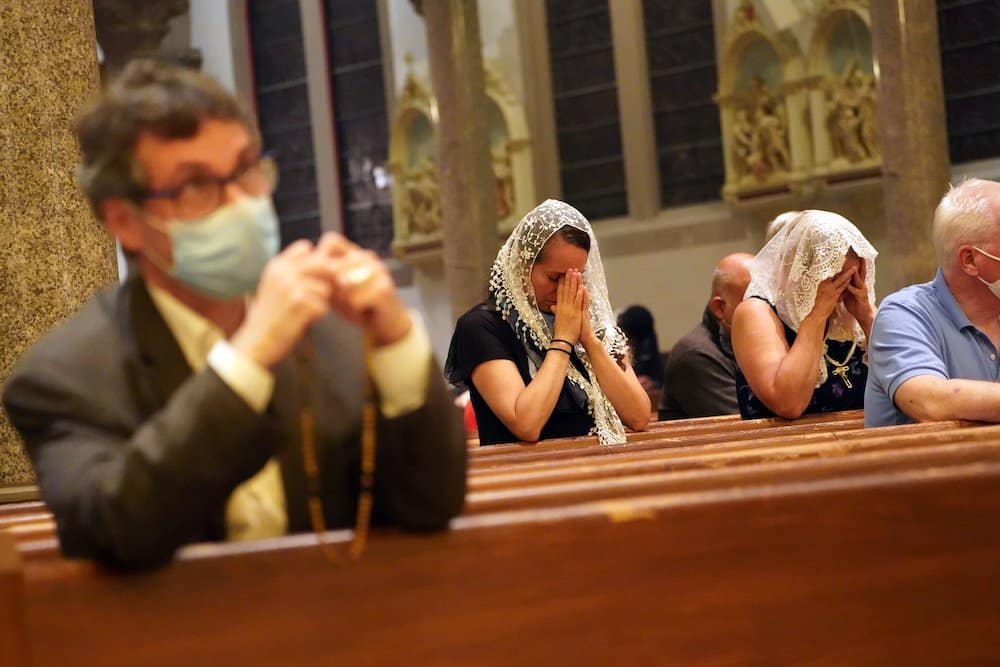
Special permission from Rome
Diocesan spokesman Billy Atwell provided a statement to OSV about how Arlington Bishop Michael Burbidge studied Pope Francis’ directives before implementing it:
“In preparation of the diocesan instruction on the use of the Traditional Latin Mass, the Diocese carried out a broad consultation with pastors and clergy who celebrate the Usus Antiquior. An ad hoc committee was formed to advise Bishop Burbidge, including specialists in canon law and liturgy, some pastors who offered the Traditional Latin Mass in their parishes, and pastors of parishes who did not offer it. Studying the norms of Traditionis Custodes and the Responsa [a response to questions about the pope’s directives], the committee gave input as to how to faithfully apply the Holy Father’s new guidelines, and provide pastoral care for those in the diocese who worshiped according to the 1962 Missale Romanum. After additional consultations with pastors, advisors and the committee, Bishop Burbidge submitted the final version of his proposal to Rome for consideration and approval.”
The diocese obtained special permission from Rome for the Mass to be celebrated in three parish churches for a period of two years. That permission can be renewed, but only if it’s evident that the parish and attendees of the traditional Mass are working “toward a unitary form,” according to Bishop Burbidge’s instructions, based on Pope Francis’ guidelines. That means that there must be efforts made for devotees of the traditional Mass to eventually switch over to the novus ordo.
A July 29, 2022, diocesan statement said that “approximately 2.5% of local, Mass-attending Catholics … prefer” the traditional Latin Mass.
| Letter from Pope Francis |
|---|
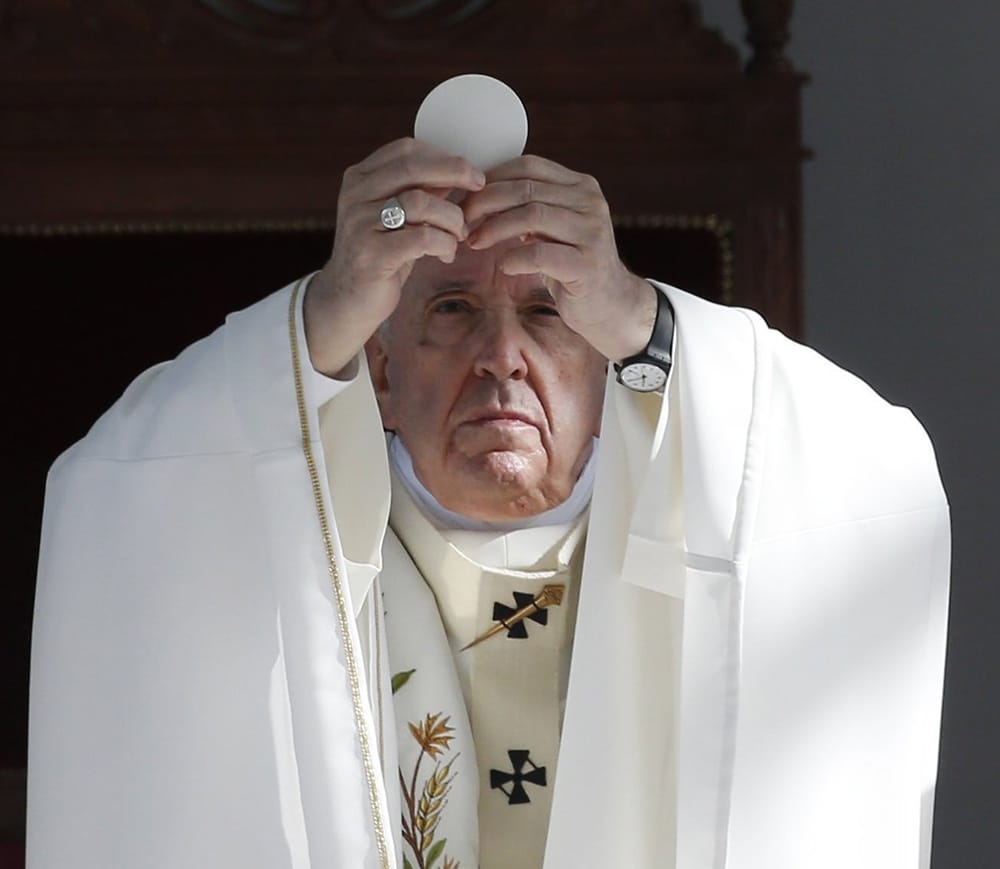 At the same time, I am saddened by abuses in the celebration of the liturgy on all sides. In common with Benedict XVI, I deplore the fact that “in many places the prescriptions of the new Missal are not observed in celebration, but indeed come to be interpreted as an authorization for or even a requirement of creativity, which leads to almost unbearable distortions.” But I am nonetheless saddened that the instrumental use of Missale Romanum of 1962 is often characterized by a rejection not only of the liturgical reform, but of the Vatican Council II itself, claiming, with unfounded and unsustainable assertions, that it betrayed the Tradition and the “true Church.” The path of the Church must be seen within the dynamic of Tradition “which originates from the Apostles and progresses in the Church with the assistance of the Holy Spirit” (DV 8). A recent stage of this dynamic was constituted by Vatican Council II where the Catholic episcopate came together to listen and to discern the path for the Church indicated by the Holy Spirit. To doubt the Council is to doubt the intentions of those very Fathers who exercised their collegial power in a solemn manner cum Petro et sub Petro in an ecumenical council, and, in the final analysis, to doubt the Holy Spirit himself who guides the Church. |
No Latin Mass on Easter
Meanwhile, Cardinal Wilton Gregory of Washington, D.C., in July 2022 designated three non-parochial churches as locations that could host a Sunday celebration of the Mass. Those three locations include the Franciscan Monastery of the Holy Land in Washington, and two locations in Maryland.
In one case, the congregation previously had a daily Latin Mass, Peters said. Parishioners “financed a new high altar which was unveiled for Easter 2022, at great expense. I mean, this is not a rich community; it’s a country church in Southern Maryland. And they were banned.”
Cardinal Gregory’s decree relegated them to one Mass on a Sunday “in a mission church that was way too small,” Peters complained.
“One of the consequences of Traditionis Custodes is that it has disappointed so many people. It has caused painful reactions: people who are devoted to the Extraordinary Form feel like they’re being forced into the catacombs.”
— An anonymous retired priest from New York
In Washington itself, the Latin Mass community at St. Mary Mother of God in Chinatown had financed the church’s renovation, “and then they find out the TLM could not be in the parish church anymore,” Peters said. The traditional Mass community made up about 60% of the parish.
“All the TLMs within Washington, D.C., proper were being merged into one TLM per week on Sundays at the Franciscan Monastery of the Holy Land,” Peters said. “Nothing for Easter, nothing for Holy Week and nothing on any day except Sunday.”
Although the monastery is close to public transportation, it’s “not all that close to some of the locations that used to have” the traditional Mass, Peters said. “It’s much further than where people were used to going. I mean some people had bought homes near Old St. Mary’s. It was the same in Maryland and Virginia.”
A spokeswoman for Cardinal Gregory, Patricia Zapor, referred OSV to previously issued statements and articles in the diocesan newspaper, which said that any priest, deacon or “instituted minister” seeking permission to celebrate the traditional Mass must affirm in writing “the validity and legitimacy of the liturgical reform dictated by the Second Vatican Council and the Magisterium of the Supreme Pontiffs.”
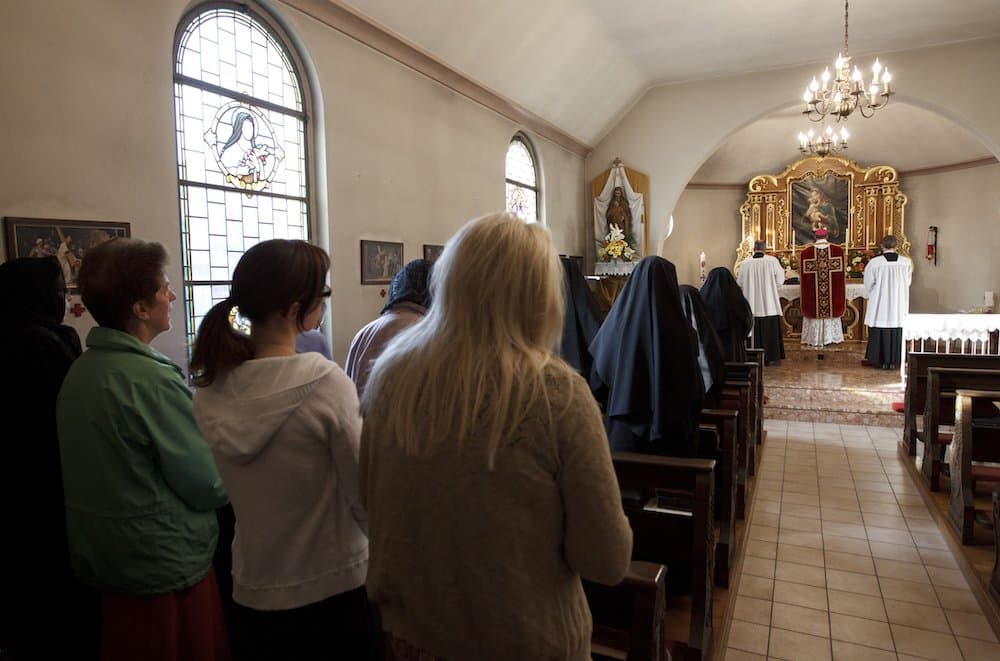
Coping strategies
Though many Catholics will still make the effort to get to the new locations, some simply attend a novus ordo Mass that’s closer. Some, however, appear to be maintaining their devotion to the traditional Mass by going to churches that are outside of ecclesial communion with Rome.
Peters said that Washington-area chapels of the Tridentine-only Society of St. Pius X, which was founded by Archbishop Marcel Lefebvre and is canonically not in communion with Rome, have seen “a lot of growth” since publication of Traditionis. Some people go there to get married in the traditional rite, since other sacraments are not permitted in the older rite under Traditionis.
The Society of St. Pius X did not respond to a request for comment.
One man, who asked to be identified only by his first name, Sterling, said he knows “quite a number of individuals” who have gone to groups such as the SSPX in the wake of Traditionis. “Some of them are very well endowed financially, and so when their bishop decided to remove their local access to the Tridentine Mass, they bought an abandoned Catholic church in the area and personally put up the capital to restore it, and then they offered the church and its restored property to the care of the Society of Saint Pius X,” he said.
And, in a case where a family had been attending a diocesan-sanctioned Latin Mass that was about 10 minutes away from their house, and the bishop shut down that location, forcing them to drive “well over an hour away,” the family built a private chapel for themselves. They now have a priest come and say Mass for them and their friends.
According to Catholic Answers, the apologetics organization, groups like the Society of St. Pius X reject the novus ordo Mass, even if it’s valid in itself, because it “reeks so strongly of Protestantism and modernism as to be downright illegitimate — simply unacceptable for Catholic worship.”
Sterling said he also has friends who regularly drive an hour and a half or more each way on Sundays to get to a traditional Mass — at churches sanctioned by the local bishop. “And these are not just small families. Keep in mind, it’s not like a single man is being affected by this. It’s a father and a mother and eight-plus children.”
Survey of Latin Mass goers
Gabriella Nyambura, a cognitive science major at Northwestern University in Evanston, Illinois, is in the midst of surveying people who attend the traditional Latin Mass, and although she doesn’t expect to be finished with the project until December, she shared preliminary results with OSV. Asked what they would do if the traditional Mass were taken away, most respondents said they would travel to a different state or diocese for it and/or attend a novus ordo Mass; 16% said they would attend a Mass offered by the Society of St. Pius X, and 10% said they would consider switching to an Eastern Catholic Church.
For many devotees, the pain and hurt and confusion with which Traditionis was greeted two years ago is still there.
Noah Peters was particularly alarmed when the Dicastery for Divine Worship issued further restrictions in December 2021.
“[Latin Mass attendees are] fine with, for example, Church teaching on contraception, Church teaching on abortion, and Church teaching on same-sex marriage. A lot of people do not want priests to start marrying and they’re generally against women being ordained to the priesthood.”
— Gabriella Nyambura
“That’s when I think people started to get concerned, because the document from Cardinal Roche went way beyond even what [Traditionis] said and seemed to be implementing the ‘spirit’ of it, which was to ultimately eliminate the traditional Latin Mass from parish life all around the world, and eventually strangle it into extermination.”
“People are fearful, they’re upset,” said Oscar Delgado, the film producer. “I mean, they don’t understand the logic.” Delgado feels that at a time when the Church is decreasing in influence in society, “and people are turning away from God, from a Christ centered existence,” Church leaders would be wiser to recognize the areas where there is growth in the Church.
“Christ said, ‘By their fruits you will know them.’ Well, if you look at any measure and just be objective, where is the Church growing? Is it growing in those orders that have taken off the habit, or is the growth in the communities that are more traditional and moving toward a more Christ-centered focus and charisms?” he asked.
Benefits
Devotees who spoke with OSV maintained that preservation of the traditional Latin Mass is important not only for themselves and their spiritual lives but also for the Church and society as a whole. When practically all of society “shut down” because of the COVID-19 pandemic, including most churches, it was pastors of traditional parishes who continued to provide the sacraments — important channels of grace, said Sterling, the man who knows of several Catholics now going outside of communion with the Roman Catholic Church in order to attend the traditional Mass.
Sterling’s parish reopened after only a two week absence, and Catholics who felt the need to receive the sacraments found out about it. “The parish grew by about 50% in the next month or so, just based on Catholics who were exiled from their own parishes not due to anything that they had done; just sacraments were unavailable and their priests weren’t willing to hear confessions,” he said. “They weren’t willing to go out and to give last rites to parishioners who were dying.”
Like many interviewed, Delgado said that the majority of his Latin Mass community in Pine Island, Minnesota, are young families. “They’re having children, you know. They have a lot of kids and they really take their faith very seriously. They do what they can to kind of shield their kids a little bit from the secular influence the culture has on us. You can just see that they’re much more observant and proactive and don’t let their kids get too far upstream to things that aren’t really Christ-centered.”
Gabriella Nyambura’s polling builds upon a survey done five years ago by Father Donald Kloster. Like that 2018 study, Nyambura is finding that the “vast majority” of Latin Mass devotees are “generally in line with Catholic teachings.”
“They’re fine with, for example, Church teaching on contraception, Church teaching on abortion, and Church teaching on same-sex marriage,” said Nyambura, who grew up attending the Tridentine Mass in her native Kenya. “A lot of people do not want priests to start marrying and they’re generally against women being ordained to the priesthood.”
Oremus
The anonymous retired New York priest said he feels that Traditionis has “hurt vocations:” tradition-minded young men are not likely to spend years studying for the priesthood if they are not going to have the option to celebrate the Tridentine Mass. No one interviewed for this article knew of a newly-ordained priest who had been granted faculties for the traditional Mass, and some said that requests are being routinely denied.
“We do have younger priests in the archdiocese who tend to be more traditional, but Traditionis Custodes sort of put them under a cloud, which is very unfortunate,” the retired priest said. “And I think that’s one reason vocations have tanked.”
While Pope Francis’ intention in Traditionis might be to foster greater unity, this priest believes it will have the opposite effect.
“The more you limit access to the Extraordinary Form, the more you’re going to cultivate that angry spirit, and I think that if the Extraordinary Form had been exposed more in more parishes, you wouldn’t have some of these people with extreme views sort of commandeering it,” he said. “But when you limit it or almost cancel it, it becomes exotic.”
Asked if people understand why Pope Francis issued Traditionis in the first place, Nyambura said, “I think they’re still scratching their heads about it. Pretty much everyone I’ve talked to is still confused.”
“We do have younger priests in the archdiocese who tend to be more traditional, but Traditionis Custodes sort of put them under a cloud, which is very unfortunate. And I think that’s one reason vocations have tanked.”
— An anonymous retired priest from New York
One man, who now attends an Eastern Catholic Divine Liturgy because his traditional Latin Mass has been restricted, told her he “doesn’t quite understand why the restrictions were imposed on Latin Mass attendees in general, because from his perspective the people who are causing issues are, for example, sedevacantists, who are actually in schism, but not so much people who just go to Latin Mass because they like it and because they find it fulfilling.
“Pretty much everyone I’ve talked to is very big on wanting to obey the clergy and to be as respectful as possible in how they discuss clerical issues, even if they don’t agree with them,” said Nyambura. “And so also among older people, especially the ones who grew up with the Latin Mass … from their vantage point and also just from the communities they’re in and the people they talk to, there are very very few people who would, for example, declare Pope Francis to be an invalid pope or who would be agitating for people to leave the Church and create their own institutions.”
For now, though, dioceses are monitoring the situation and planning to see how their implementation of Traditionis is working out, reporting back to Rome on an annual basis. Pretty much all that people in the pews can do is continue to pray.

